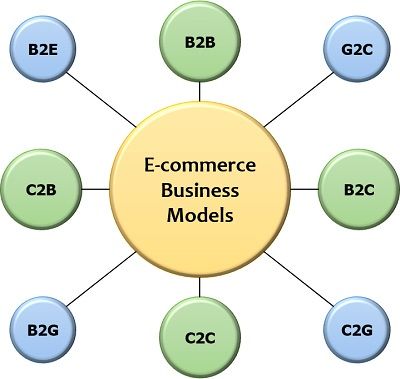Different Types of E-Commerce Models

There are several types of e-commerce models, each catering to different types of transactions and business relationships. Here are the main types:
Business-to-Consumer (B2C): This is perhaps the most common type of e-commerce, where businesses sell products or services directly to individual consumers. Examples include online retail stores like Amazon, Walmart, and eBay, where consumers can purchase goods from a wide range of categories.
Business-to-Business (B2B): In B2B e-commerce, businesses sell products or services to other businesses. This can involve manufacturers selling raw materials to other companies, wholesalers supplying products to retailers, or service providers offering solutions to other businesses. B2B transactions often involve larger volumes and higher order values compared to B2C transactions.
Consumer-to-Consumer (C2C): C2C e-commerce involves transactions between individual consumers, facilitated by online platforms or marketplaces. Examples include online auction sites like eBay and classified ad platforms like Craigslist, where individuals can buy and sell goods directly to each other.
Consumer-to-Business (C2B): In C2B e-commerce, individual consumers offer products or services to businesses. This can include freelancers providing services to businesses on platforms like Upwork or Fiverr, or individuals selling their creative work or expertise directly to companies.
Business-to-Government (B2G): B2G e-commerce involves transactions between businesses and government entities. This can include businesses supplying products or services to government agencies through online procurement systems or government contracts.
Government-to-Business (G2B): G2B e-commerce refers to transactions where government entities offer products or services to businesses. Examples include government agencies selling surplus equipment or licenses to businesses through online platforms.
Government-to-Citizen (G2C): G2C e-commerce involves transactions between government entities and individual citizens. This can include citizens paying taxes, fees, or fines online, applying for government services, or purchasing permits or licenses through government websites.
Mobile Commerce (m-commerce): M-commerce refers to e-commerce transactions conducted through mobile devices such as smartphones and tablets. This can include mobile shopping apps, mobile-optimized websites, and mobile payment systems.
These are the primary e-commerce models, but there can be variations and hybrids based on specific business needs and market dynamics.
Thank you,